2015
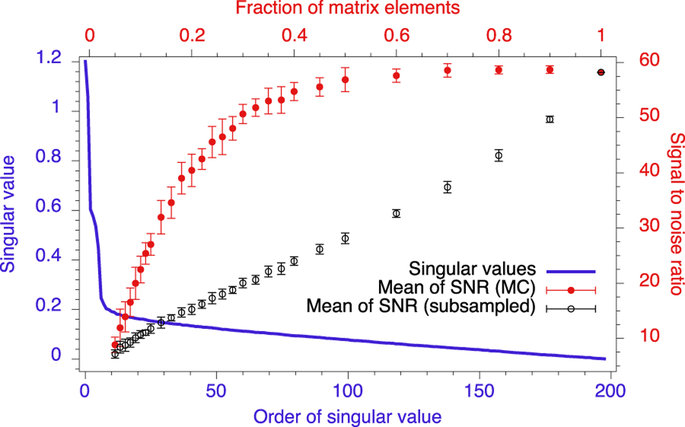
Accelerated 2D magnetic resonance spectroscopy of single spins using matrix completion
J. Scheuer, A. Stark, M. Kost, M. B. Plenio, B. Naydenov, and F. Jelezko
Scientific Reports 5, 17728 (2015) | ArXiv
licensed under CC BY 4.0
Two dimensional spectroscopy suffers from huge data acquisition times, that make it unattractive for a lot of applications. However, tailored optimization routines lead to a significant acceleration in this step. One of the most promising optimization ideas is the completion of redundant matrices from only a few of its entries. This so called matrix completion can be implemented in various algorithms. In this paper we demonstrate the application of the so called singular value thresholding algorithm to enable time efficient 2D magnetic resonance spectroscopy with Nitrogen Vacancy (NV) centers in diamond, speeding up the data acquisition by a factor of 5-10.
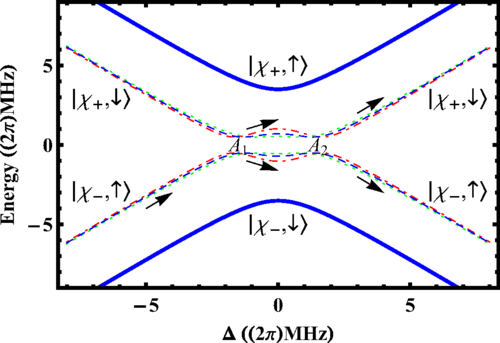
Optical hyperpolarization of 13C nuclear spins in nanodiamond ensembles
Q. Chen, I. Schwarz, F. Jelezko, A. Retzker, and M. B. Plenio
Physical Review B 92, 184420 (2015) | ArXiv
Magnetic resonance techniques enables a wide range of novel applications in chemistry, physics and biomedical sciences, such as powerful imaging tools which have revolutionized medicine. In the past decades, dynamical nuclear polarization (DNP) has been utilized to get orders of magnitude enhancements of nuclear magnetic resonance signals. However, current implementations of DNP require cryogenic temperatures and long times for achieving high polarization. Here we propose and analyze in detail protocols that can achieve rapid hyperpolarization of 13C nuclear spins in randomly oriented ensembles of nanodiamonds at room temperature. Our basic idea is transfer of the optical polarization of electron spins in nitrogen-vacancy centers to 13C nuclei. Severe challenges are posed by the random orientation of the nanodiamonds and their nitrogen-vacancy centers. We address these challenges by a combination of (1) an off-resonant microwave double resonance scheme in conjunction with (2) a realization of the integrated solid effect. Together with adiabatic rotations of the external magnetic fields or rotations of the nanodiamonds leads to over 10,000-fold enhancement in the 13C polarization. This high levels of hyperpolarization, together with the long nuclear-spin polarization lifetimes in nanodiamonds and the relatively high density of 13C nuclei, turn functionalized and hyperpolarized nanodiamonds into attractive MRI probes for molecular imaging both in vitro and in vivo.
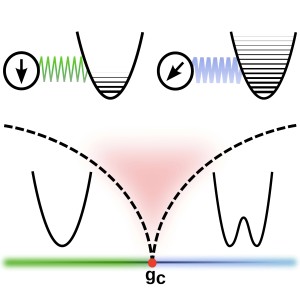
Quantum Phase Transition and Universal Dynamics in the Rabi Model
M.-J. Hwang, R. Puebla, and M. B. Plenio
Phys. Rev. Lett. 115, 180404 (2015) | ArXiv
Quantum phase transition describes an abrupt change in ground state properties of a quantum system upon a change of a system parameter. The phase transition is generally held to occur in a system where the number of system components is infinite, realizing the so-called thermodynamic limit. In this paper we have challenged this notion by showing that even a single two-level atom coupled to a single harmonic oscillator can undergo a quantum phase transition. It is identified that an atomic transition frequency that is much larger than an oscillator frequency in the regime of a very strong coupling strength can play the same role of the traditional thermodynamic limit achieved by the many atoms. Moreover, we have also confirmed that its adiabatic dynamics is governed by a Kibble-Zurek mechanism, which is a common trait of a critical system undergoing a phase transition.
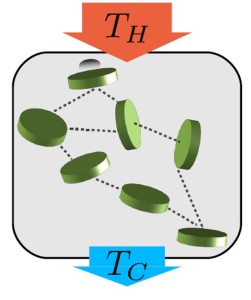
Enhancing light-harvesting power with non-classical vibrational interactions: A quantum heat engine picture
N. Killoran, S. F. Huelga and M. B. Plenio
J. Chem. Phys. 143, 155102 (2015)| ArXiv
Biological systems are very small and highly sophisticated thermodynamic engines that are operating in a regime in which quantum fluctuations are not completely negligible anymore.
In this work we are taking this viewpoint seriously and study an aspect of the energy conversion process from sunlight to chemical energy in the presence of exciton-vibrational coupling. To this end we design a prototypical quantum heat engine which defines carefully all quantities and then we proceed to demonstrate quantitatively the increase in power that is achievable due to the presence of exciton-vibrational coupling.
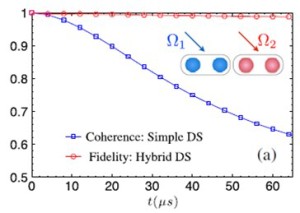
High-fidelity quantum simulation using hybrid dressed states
J.M. Cai, I. Cohen, A. Retzker and M. B. Plenio
Physical Review Letters 115, 160504 (2015) | ArXiv
Trapped ions represent a promising technology for the implementation of quantum information processing. However, a wide variety of noise sources reduce the fidelity of quantum gates and require careful attention. Besides the improvement of the hardware, software solutions, that is improved protocols, represent important steps towards ion trap based quantum information processing. Each such strategy tends to have strengths and weaknesses and happy marriages of several techniques has the potential of achieving significantly improved performance. In this work we combine two approaches, continuous dynamical decoupling and decoherence free subspaces to combine their advantages. We show that this combination can be used to achieve a high fidelity quantum simulation.
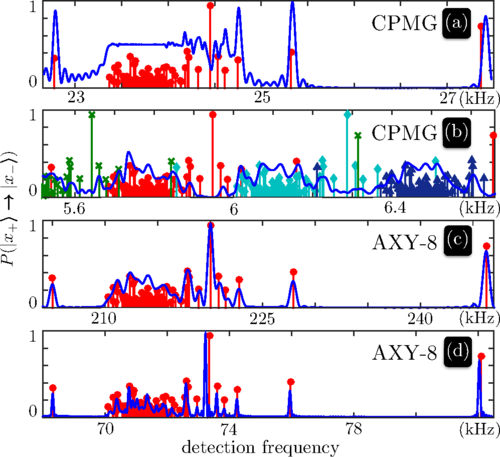
Robust dynamical decoupling sequences for individual-nuclear-spin addressing
J. Casanova, Z.-Y. Wang, J.F. Haase, and M. B. Plenio
Physical Review A 92, 042304 (2015) | ArXiv
Nuclear spins are exceptional candidates to store and process quantum information. Our method generates highly selective filter functions ensuring individual addressing and control of nuclear spins in realistic scenarios. In the same way, when applied to an NV center system implanted close to the diamond surface, our protocol is of relevance for the precise identification and localization of nuclear spins in large molecules located on top of the diamond. Therefore, with our work we are paving the way to the control of robust large-scale quantum platforms and the performance of magnetic resonance imaging of individual molecules.
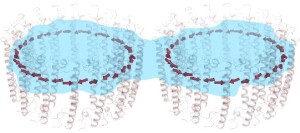
Optical signatures of quantum delocalization over extended domains in photosynthetic membranes is witnessed by polarized light excitation
C. Schroeder, F. Caycedo-Soler, S.F. Huelga, and M.B. Plenio
J. Phys. Chem. A 119, 9043 – 9050 (2015)
Electronic excitations in photosynthetic membranes occur when a biomolecule (pigment) is excited by light. Many pigments constitute these membranes, which due to their mutual interaction, are able to be excited collectively. Based on Quantum Mechanics, the collective behavior results in an electronic excitation delocalized over these interacting pigments. Historically, excitonic delocalization has been observed to occur between pigments that strongly interact. A clear border that states how strong the interaction must be in order to set a size for the excitons, is still under debate. In our paper we demonstrate theoretically that the excitonic delocalization in photosynthetic membranes can extend over greater domains than previously assumed. These excitons were thought to reside over single ring-like harvesting structures in purple bacteria. As we show here, these excitons rather involve several light-harvesting rings, in a phenomenon that can be verified unambiguously through polarized absorption spectra. This work opens a way to experimentally verify how optical observables are a key tool to progress in the understanding of the interplay between classical and quantum mechanics in the biologically relevant structures for the photosynthesis of purple bacteria.

Simulating Bosonic Bath with Error Bars
M. P. Woods, M. Cramer, and M. B. Plenio
Physical Review Letters 115, 130401 (2015) | ArXiv
The simulation of the dynamics of a quantum system with a structured environment is a topic of longstanding interest as it has a broad range of applications ranging from the simulation of quantum technologies to the study of quantum effects in biological systems. In 2010 our group has developed a new approach, TEDOPA, to this problem (Prior, J., Chin, A. W., Huelga, S. F., & Plenio, M. B. (2010). Efficient simulation of strong system-environment interactions. Physical review letters, 105(5), 050404) combining the theory of orthogonal polynomials with time dependent renormalisation group methods. What was missing though were rigorous error bounds on the various approximations that are made in this approach when it is implement numerically. The present work achieves this goal and establishes TEDOPA as, to our knowledge, the first method with such bounds.
Experimental Detection of Quantum Coherent Evolution through the Violation of Leggett-Garg-Type Inequalities
Z.-Q. Zhou, S. F. Huelga, C.-F. Li, and G.-C. Guo
Physical Review Letters 115, 113002 (2015) | ArXiv
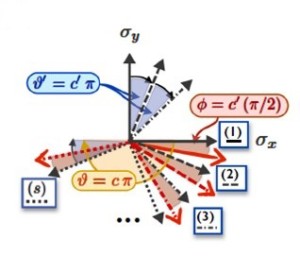
Filter design for hybrid spin gates
A. Albrecht, and M. B. Plenio
Physical Review A 92, 022340 (2015) | ArXiv
Quantum systems are generally subjected to noise from their environment. In many practical cases this noise has a finite width frequency spectrum, or equivalently a finite correlation time. For such noise it is possible to make use of dynamical decoupling methods that had been invented over the last 5 decades in nuclear magnetic resonance to average out the action of the noise. Recently, these methods have received considerable attention with the advent of solid state implementations of quantum information processing and they are also finding applications in trapped ion technologies. In this work we have furthered the development of these methods by introducing alternating pulse sequences that lead to tunable filter functions. This is the first of several works in this direction to emerge from this group: Robust dynamical decoupling sequences for individual-nuclear-spin addressing ; Positioning nuclear spins in interacting clusters for quantum technologies and bioimaging.
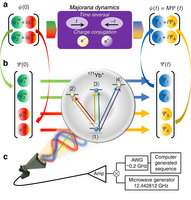
Time reversal and charge conjugation in an embedding quantum simulator
X. Zhang, Y. Shen, J. Zhang, J. Casanova, L. Lamata, E. Solano, M.-H. Yung, J.-N.Zhang, and K. Kim
Nature Communications 6, 7917 (2015) | ArXiv
licensed under CC BY 4.0
Quantum computers or quantum simulators are quantum devices that may soon outperform current classical computations for analyzing complex quantum phenomena. However, they are not yet able to perform some basic arithmetic calculations such as finding the complex conjugate. Operations involving the complex conjugate require an anti-unitary process, an impossible task if directly implemented in a quantum system restricted to unitary gates. In addition, such complex conjugate is deeply connected to the important concepts in quantum field theory like charge conjugation and time reversal. For the first time, we perform the complex conjugation and these symmetry operations in our trapped-ion quantum system through the use of enlarged spaces and the novel concept of embedding a quantum simulator. Our realization can be applied to numerous quantum calculations and simulations that require access to the implementation of unphysical operations.
Efficiency of quantum controlled non-Markovian thermalization
V. Mukherjee, V. Giovannetti, R. Fazio, S. F. Huelga, T. Calarco, and S. Montangero
New Journal of Physics 17, 063031 (2015) | ArXiv
licensed under CC BY 3.0
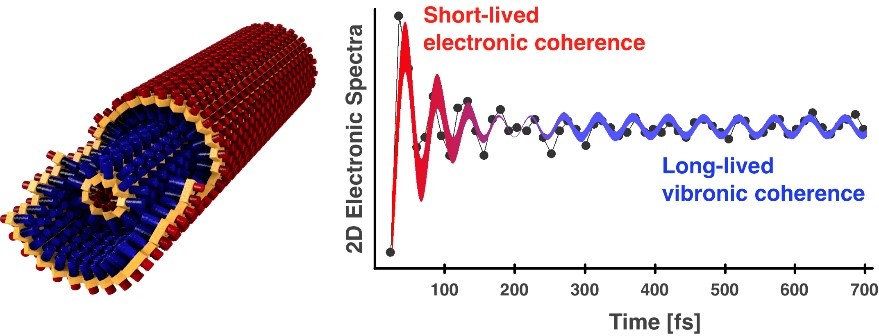
Vibronic origin of long-lived coherence in an artificial molecular light harvester
J. Lim, D. Paleček, F. Caycedo-Soler, C. N. Lincoln, J. Prior, H. von Berlepsch, S. F. Huelga, M. B. Plenio, D. Zigmantas, and J. Hauer
Nature Communications 6, 7755 (2015) | ArXiv
With the advent of two-dimensional electronic spectroscopy, long-lasting quantum coherences have been reported for several photosynthetic systems. To explain how these quantum coherences are sustained under noisy biological environments at ambient temperatures, our team proposed a vibronic coupling mechanism, published in Phys. Rev. Lett. 105, 050404 (2010) and Nature Physics 9, 113 (2013), where the intramolecular vibrational motion of light-absorbing pigments enhances coherent electronic processes. However, unambiguous test of the vibronic coupling mechanism has been a challenging task due to the complexity of biological systems and their two-dimensional electronic spectra. To test the theoretical hypothesis for biological systems unambiguously, our team together with colleagues from Vienna University of Technology (Austria), Lund University (Sweden), Charles University in Prague (Czech Republic), Universidad Politécnica de Cartagena (Spain) and Freie Universität Berlin (Germany) assembled and investigated an artificial molecular light-harvester, called J-aggregates of cyanine dyes. The relatively simple electronic and vibrational structure of the artificial light-harvester reduced the complexity of two-dimensional electronic spectra significantly and allowed to test the vibronic coupling mechanism quantitatively.
In this paper we demonstrated that the coherent interaction between intramolecular vibrations and electronic degrees of freedom induces long-lasting quantum coherences in J-aggregates, which provided quantitative agreement with our experimental observations. This implies that vibrations, which are typically considered as a source of noise destroying electronic coherences, can play an opposite role, namely enhancing coherent electronic motions, such that electronic excitations are transferred quantum-mechanically through a molecular system in a wave-like manner.
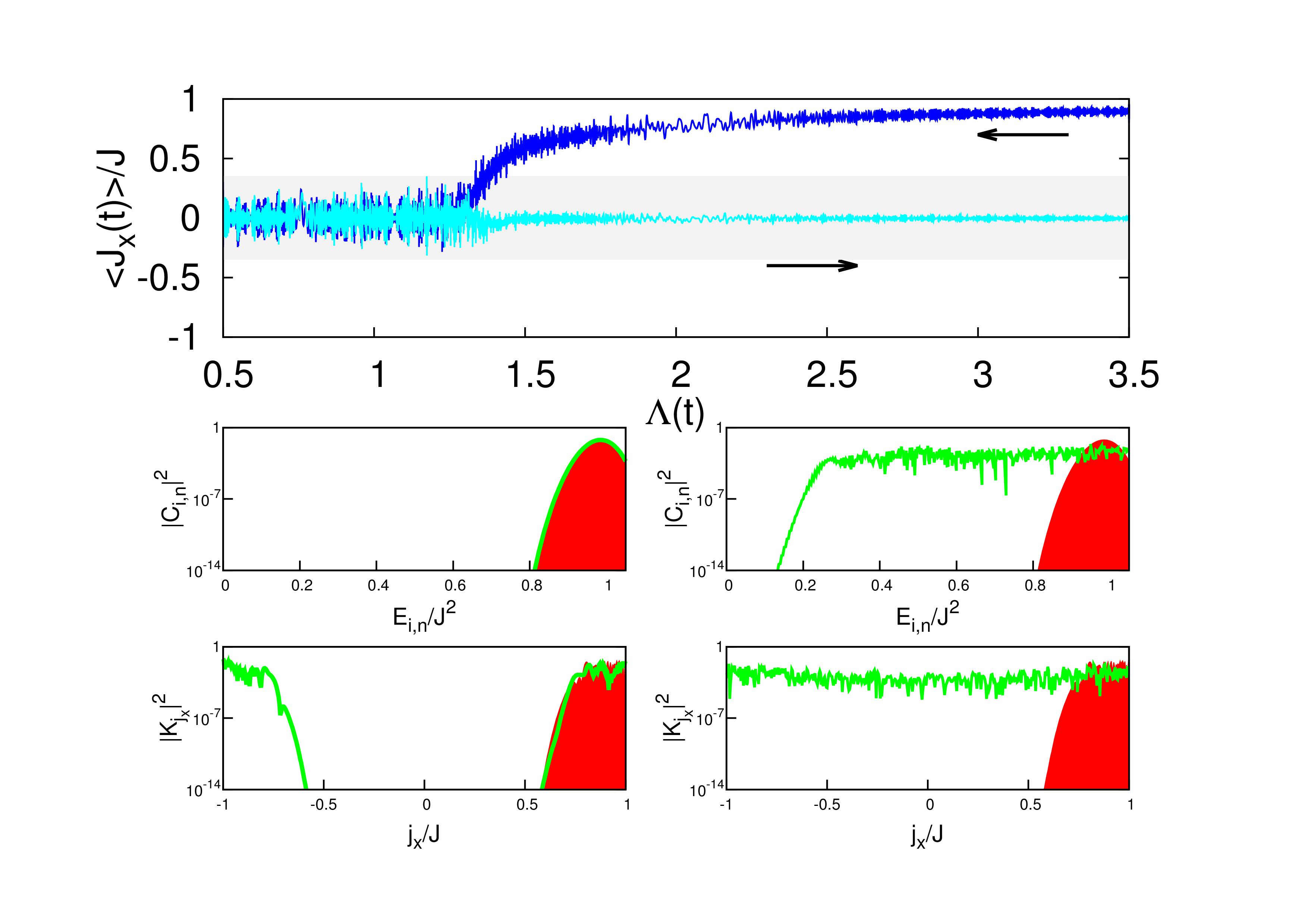
Irreversible processes without energy dissipation in an isolated Lipkin-Meshkov-Glick model
Ricardo Puebla and Armando Relaño
Physical Review E 92, 012101 (2015) | ArXiv
Irreversibility stems from the inability of a system to recover or restore its initial state without help of an external action or investing energy into it, and it is characterized by an entropy production. Moreover, it is also known that there is a strong connection between irreversibility and information gained or lost by the system, manifested in the physical consequences of the Szilard engine and expressed in the Landauer principle of information erasure. Therefore, a complete description of the entropy production requires the account of information flow.
In this work, we analyse how the (ir)reversible behavior is affected by extra information in a simple and isolated model. A symmetry-breaking initial state is continuously driven from a degenerate to a non-degenerate phase, performing a closed cycle. When the driving is performed infinitely slow, there is no transition among eigenstates and hence, the population of each eigenstate in the final state perfectly matches the ones of the initial state. Nevertheless, the initial information regarding the symmetry-breaking is unavoidably lost, provided the initial state is spread over many eigenstates. This constitutes a source of irreversibility which is not linked to energy dissipation, but to a loss of information. We provide a thermodynamic interpretation relying on equilibrium states, which sets a lower bound of the entropy production equals to the information loss, log2, which stems from the two choices of symmetry breaking present in the system.
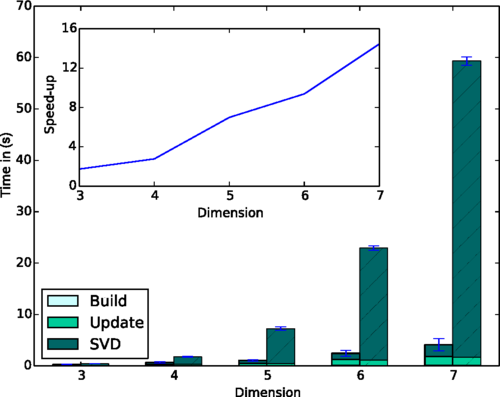
Improved scaling of time-evolving block-decimation algorithm through reduced-rank randomized singular value decomposition
D. Tamascelli, R. Rosenbach and M.B. Plenio
Physical Review E 91, 063306 (2015) | ArXiv
The Nitrogen Vacancy (NV) center in diamond allows extremely sensitive magnetic field measurements under room temperature conditions. Implanted close to the surface, the enormous sensitivity allows for the resolution of level splittings induced by dipolar coupling in molecules attached to the surface. Exploiting correlated spectroscopy (COSY), we can read out these splittings to compute the spatial structure of the molecule and its constituents. In the strong coupling regime, the pure interaction between NV center and the molecule is sufficiently strong, to get a full contrast signal even without polarizing the nuclear spins in the molecule. We further demonstrate the speed up in data acquisition by matrix completion procedures.
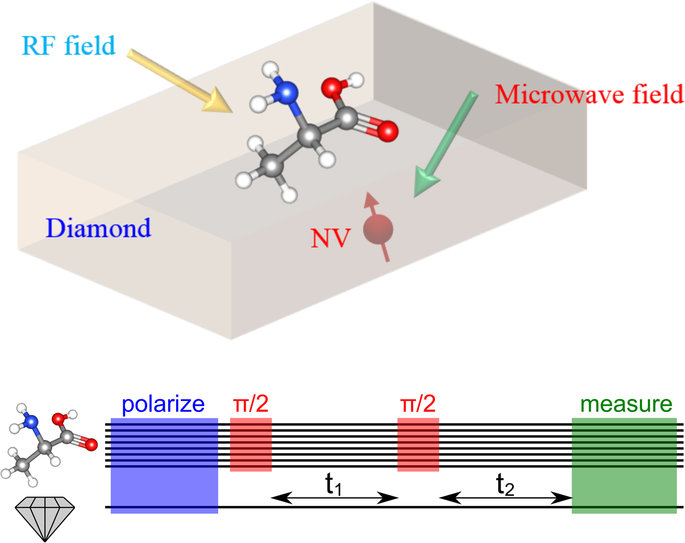
Resolving single molecule structures with Nitrogen-vacancy centers in diamond
M. Kost, J.-M. Cai and M.B. Plenio
Scientific Reports 5, 11007 (2015) | ArXiv
licensed under CC BY 4.0
The Nitrogen Vacancy (NV) center in diamond allows extremely sensitive magnetic field measurements under room temperature conditions. Implanted close to the surface, the enormous sensitivity allows for the resolution of level splittings induced by dipolar coupling in molecules attached to the surface. Exploiting correlated spectroscopy (COSY), we can read out these splittings to compute the spatial structure of the molecule and its constituents. In the strong coupling regime, the pure interaction between NV center and the molecule is sufficiently strong, to get a full contrast signal even without polarizing the nuclear spins in the molecule. We further demonstrate the speed up in data acquisition by matrix completion procedures.
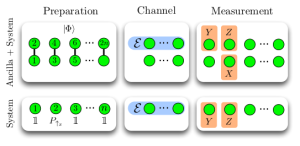
Scalable Reconstruction of Unitary Processes and Hamiltonians
M. Holzäpfel, T. Baumgratz, M. Cramer and M.B. Plenio
Physical Review A 91, 042129 (2015) | ArXiv
Determining the state of a quantum system is a non-trivial task due to the
probabilistic nature of quantum measurements: The resulting data only allows for an estimation of the true state of the system. The same is true for characterizing a quantum process, i.e. how a complete set of states is changed e.g. by a unitary time evolution. To determine an arbitrary state of n qubits, we also have to measure a number of observables which grows exponentially with n. However, using basic linear algebra, one can find efficient representations of many many-qubit states (so-called matrix product states, MPS) and it has been shown that such states often allow for characterization with a much smaller number of observables. In our simulation, we efficiently determine an unknown quantum process of a many-qubit system by adapting existing methods for state characterization. We use a known correspondence between quantum processes on n qubits and quantum states on 2n qubits, but it turns out that this enlarged system is not necessary in an actual experiment.
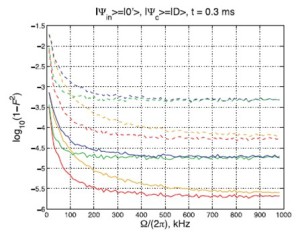
Universal Set of Gate for Microwave Dressed-state Quantum Computing
G. Mikelsons, I. Cohen, A. Retzker and M.B. Plenio
New Journal of Physics 17, 053032 (2015) | ArXiv
licensed under CC BY 3.0
Trapped ions represent one of the frontrunner technologies towards the realization of medium for large scale quantum computation. Currently the standard approach uses lasers to control and entangle the ions but some 15 years ago an alternative approach had been suggested which uses microwaves applied to ions in the presence of a magnetic field gradient to achieve spin-motion coupling and, building on that, entanglement between ions. The qubit states that were required for that are magnetically sensitive and therefore susceptible to magnetic field fluctuations. in Nature 476, 185 (2011) we proposed continuous dynamical decoupling as a means to overcome this problem and contributed to a first experimental realization. In the present work we have analysed our approach in considerable detail. We demonstrate that it is capable of delivering quantum gates of a fidelity that exceed fault tolerant thresholds and that therefore, large scale quantum computing is made possible in principle.
Redfield equations for modeling light-harvesting complexes
J. Jeske, D. Ing, M. B. Plenio, S. F. Huelga and J. H. Cole
Journal of Physical Chemistry 142, 064104 (2015) | ArXiv
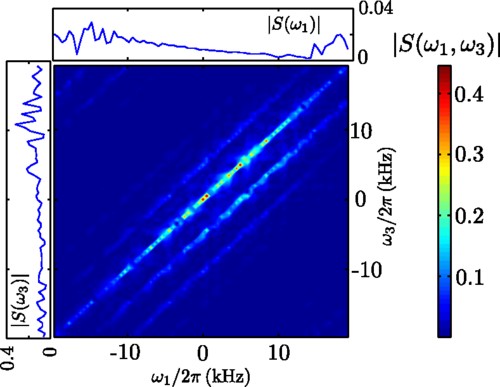
Two-Dimensional Spectroscopy for the Study of Ion Coulomb Crystals
A. Lemmer, C. Cormick, C. T. Schmiegelow, F. Schmidt-Kaler and M. B. Plenio
Physical Review Letters 114, 073001 (2015) | ArXiv
Trapped atomic ions have proven to be a very versatile tool for quantum information processing and the simulation of quantum dynamics. More recently, they have also become a testbed for statistical mechanics. For the study of statistical mechanical systems it is desirable to extend the toolbox of analysis techniques available with trapped ions.
In this work we show how the technique of two-dimensional (2D) spectroscopy that has been very successful in other fields, such as NMR and quantum biology, can be applied to trapped ions. It turns out that the method is particularly well-suited to study non-linear interactions in ion traps. We illustrate the usefulness of the technique with two concrete examples: one is the detection of the onset of a phase transition while the second is resonant non-linear exchange of energy between motional modes.
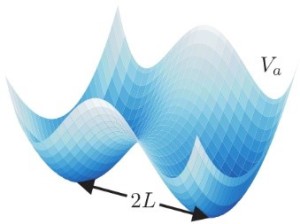
Nondestructive selective probing of phononic excitations in a cold Bose gas using impurities
D. Hangleiter, M. T. Mitchison, T. H. Johnson, M. Bruderer, M. B. Plenio, and D. Jaksch
Physical Review A 91, 013611 (2015) | ArXiv
Ultracold quantum gases are an extremely clean realization of interacting quantum many-body systems and exhibit interesting properties such as superfluidity and quantum phase transitions. For studying these phenomena it is necessary to probe quantum gases with high accuracy while leaving their characteristic quantum features intact. In our work we suggest a scheme for measuring temperatures and excitations with a single impurity atom that is immersed in a Bose gas. The impurity is confined by a double-well potential and acts as an effective qubit coupled to phononic excitations of the quantum gas. We show how to use the detector to observe coherent density waves and to measure temperatures down to the nanokelvin regime. The scheme could be realized experimentally, including the possibility of using an array of multiple impurities to achieve greater precision.
Contact



Ulm University
Institute of Theoretical Physics
Albert-Einstein-Allee 11
D - 89081 Ulm
Germany
Tel: +49 731 50 22911
Fax: +49 731 50 22924
Office: Building M26, room 4117
Click here if you are interested in joining the group.
Most Recent Papers
Making quantum collision models exact, Commun. Phys. 8, 268 (2025), arXiv:2411.13166
Accelerating two-dimensional electronic spectroscopy simulations with a probe qubit protocol, Phys. Rev. Research 7, 023130 (2025), arXiv:2411.16290
13C hyperpolarization with nitrogen-vacancy centers in micro- and nanodiamonds for sensitive magnetic resonance applications, Sci. Adv. 11, eadq6836 (2025), arXiv:2403.14521
YASTN: Yet another symmetric tensor networks; A Python library for Abelian symmetric tensor network calculations, SciPost Phys. Codebases (2025), arXiv:2405.12196
Unlocking Heisenberg Sensitivity with Sequential Weak Measurement Preparation, Quantum 9, 1590 (2025), arXiv:2403.05954
